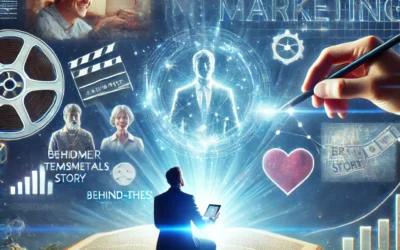Marketing isn’t just about selling—it’s about understanding human behavior. Why do people buy certain products? What triggers a purchase decision? The answer lies in psychology.
By tapping into key psychological principles, businesses can influence consumer behavior, increase conversions, and build lasting brand loyalty. Let’s explore how psychology plays a role in marketing and how you can use it to your advantage. 🚀
1. The Power of Social Proof
People tend to follow the crowd. If others are using and recommending a product, new buyers feel more confident making a purchase.
🔥 How to Use Social Proof:
✔ Display customer reviews & testimonials on your website
✔ Showcase social media mentions and user-generated content
✔ Highlight the number of satisfied customers (“Over 10,000 happy buyers!”)
📌 Example: Amazon’s best-selling products always feature thousands of reviews, increasing buyer trust.
2. Scarcity & Urgency: Fear of Missing Out (FOMO)
Consumers act faster when they feel they might miss out on a good deal. This is why limited-time offers and flash sales work so well.
🔥 How to Use Scarcity & Urgency:
✔ Add countdown timers (“Sale ends in 3 hours!”)
✔ Use limited-stock messages (“Only 2 left in stock”)
✔ Create exclusive offers (“Only available to the first 100 customers”)
📌 Example: Booking.com displays “Only 1 room left at this price!”, pushing users to book quickly.
3. Reciprocity: Give Before You Receive
People feel compelled to return the favor when they receive something valuable for free. This principle is why free trials, samples, and valuable content are powerful marketing tools.
🔥 How to Use Reciprocity:
✔ Offer a free eBook, guide, or trial before asking for a sale
✔ Send a small gift or discount after a purchase
✔ Provide genuine value in your content (helpful tips, tutorials)
📌 Example: Costco gives out free food samples, leading to higher product sales.
4. The Anchoring Effect: Price Perception
The first price a customer sees anchors their perception of value. By showing a high original price and then a discount, you make the deal seem more attractive.
🔥 How to Use Anchoring:
✔ Show original vs. discounted prices (“Was $199, Now $99”)
✔ Place premium options first to make lower-priced items seem affordable
✔ Use tiered pricing to make middle options look like the best deal
📌 Example: Apple lists higher-priced models first, making the base models feel like a bargain.
5. Storytelling & Emotional Connection
People remember stories more than facts. Emotional storytelling makes a brand more relatable, memorable, and persuasive.
🔥 How to Use Storytelling:
✔ Share real customer success stories
✔ Use emotion-driven advertising (happiness, nostalgia, fear, excitement)
✔ Make your brand’s mission personal & relatable
📌 Example: Nike’s “Just Do It” ads tell motivational stories that inspire action.
Final Thoughts
Marketing psychology is all about human behavior. By leveraging social proof, urgency, reciprocity, anchoring, and storytelling, you can increase engagement, influence decisions, and drive sales.
Which of these psychological tricks have you used in your marketing? Leave a comment and tell me what you think! 🚀




0 Comments